Key takeaways:
- Fast fashion promotes overconsumption and prioritizes price over quality, leading to regret over impulsive purchases.
- Environmental and ethical issues are significant concerns, including textile waste and worker exploitation in the fast fashion industry.
- Identifying ethical fashion brands involves looking for transparency, certifications, and meaningful storytelling.
- Building a sustainable wardrobe focuses on investing in versatile, quality pieces, and embracing second-hand shopping.
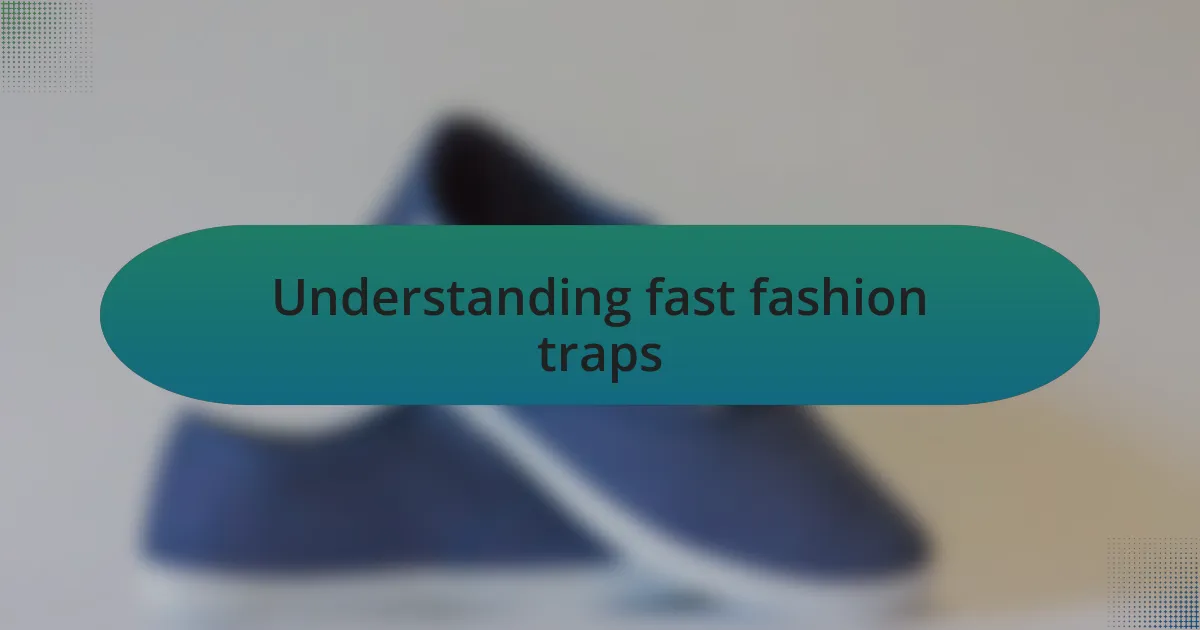
Understanding fast fashion traps
Fast fashion traps are cleverly disguised pitfalls that lure consumers into a cycle of overconsumption. I remember the excitement I felt when I found a trendy piece for a steal, only to realize that I wore it once before it faded and fell apart. This experience made me question how we often prioritize price over quality, sacrificing long-lasting pieces for fleeting trends.
What strikes me about the fast fashion industry is how it thrives on our desire for novelty. It plays on our emotions, coaxing us into believing that we need the latest styles to feel confident or to belong. Have you ever felt that rush of satisfaction after buying something new, only to be left with remorse just a few weeks later? It’s a common cycle that many of us experience, and recognizing it is the first step to breaking free.
Additionally, the environmental and ethical costs of fast fashion often remain hidden beneath the surface. I was shocked to learn about the waste generated by these industries and the exploitation behind the scenes. This not only fuels my commitment to avoid fast fashion but also inspires me to seek out sustainable alternatives that reflect my values and long-term vision for fashion.
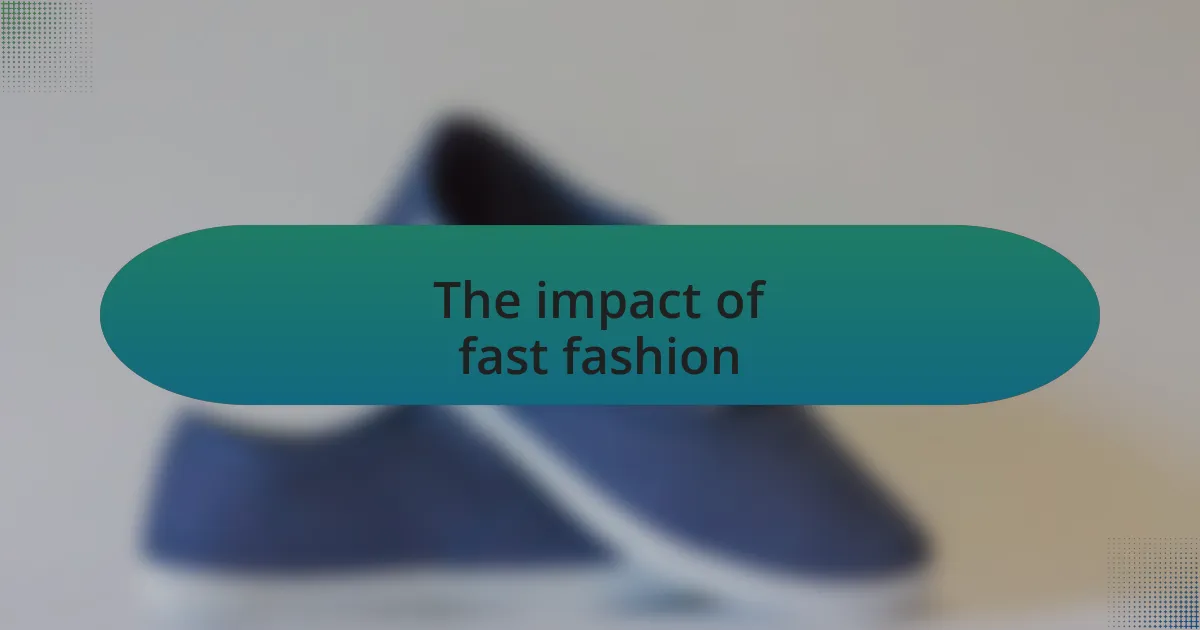
The impact of fast fashion
Fast fashion’s impact extends far beyond just our personal wardrobes; it has profound effects on our planet. I still remember a documentary I watched that depicted the staggering amount of textile waste piled in landfills. It struck me to see clothes that had barely been worn contributing to such a staggering problem. Isn’t it alarming that our impulses for cheap, trendy items can lead to environmental degradation that lasts much longer than the fabric itself?
On a more personal level, I’ve noticed how fast fashion shapes our perception of value. I used to think buying more clothes for less money made sense, but reflecting on my overflowing closet revealed a different story. Have you ever felt overwhelmed by choices yet dissatisfied with what you have? This realization pushed me to appreciate quality over quantity, ultimately leading me to invest in pieces that last and resonate more with my style.
Moreover, the fast fashion industry often exploits workers in its pursuit of speed and low cost, which really hits home when I think about the people behind the garments we wear. I once visited a local fair showcasing handmade clothing, and the stories from the artisans made me reconsider the faces behind my purchases. It’s a stark contrast to the faceless production lines of fast fashion. Shouldn’t we strive to support ethical practices and give a voice to those creating our clothing?
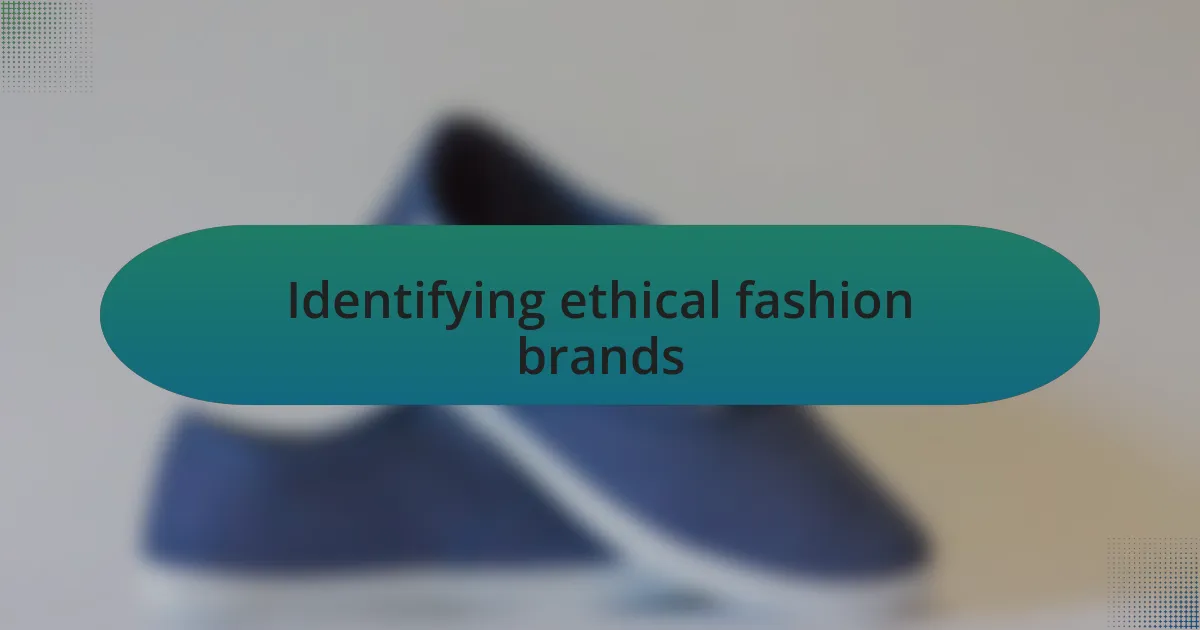
Identifying ethical fashion brands
Identifying ethical fashion brands can feel like searching for a needle in a haystack, but it’s incredibly rewarding once you know what to look for. One key aspect I often look for is transparency; brands that openly share their supply chain practices instill confidence in me. When I learned about a local brand committed to fair wages and sustainable materials, it felt like a victory, realizing I could enjoy beautiful clothing while supporting an ethical mission.
Another critical factor is certifications. Brands that have certifications like Fair Trade or GOTS (Global Organic Textile Standard) often adhere to stricter ethical and sustainability guidelines. I remember my excitement when I discovered a summer dress that was not only stylish but also made from organic cotton and certified by GOTS—it was a win-win situation that aligned with my values.
Lastly, I pay attention to the brand’s storytelling. When a brand shares its journey, from design inspirations to the artisans’ stories, it resonates deeply with me. I once came across a company whose founder traveled to local communities to empower artisans by involving them in design decisions. Such stories remind me that every piece carries meaning, making my purchase feel more purposeful. Don’t you find that connection enhances the joy of wearing your clothes?
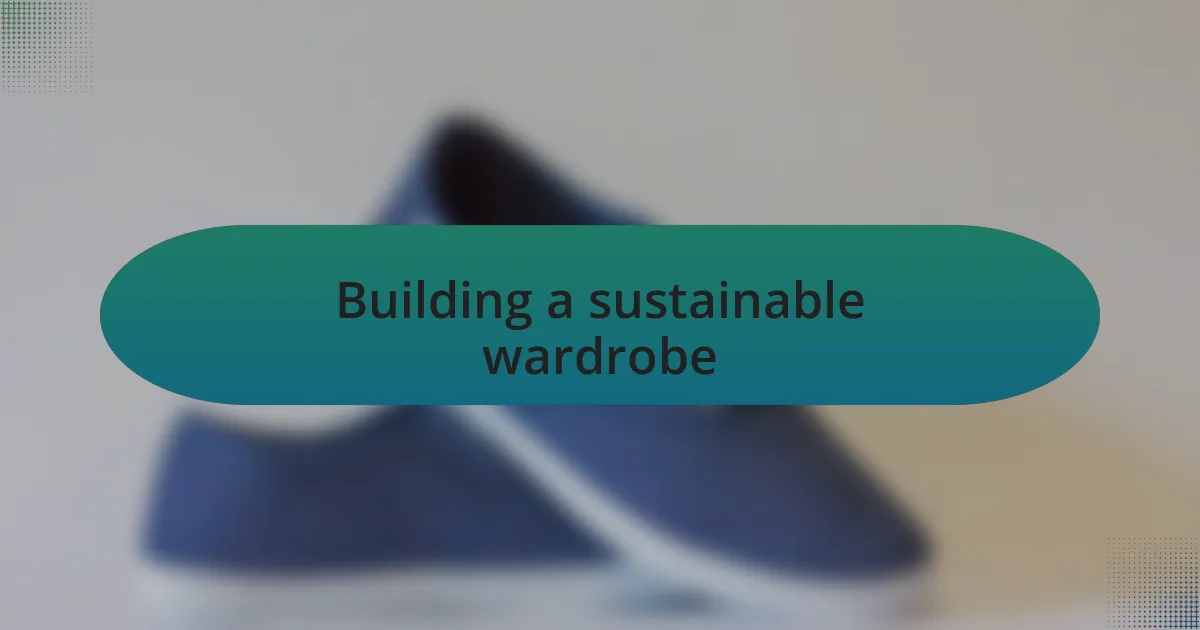
Building a sustainable wardrobe
When building a sustainable wardrobe, I’ve found that versatility is key. Pieces that can be styled in multiple ways not only save me money but also reduce waste. For example, I have a classic black blazer that looks great for work meetings, casual outings, and even dressy events. Have you ever noticed how a few staple items can become the backbone of your closet?
Another crucial element in my approach is investing in quality over quantity. I used to buy several cheaper items that soon lost their shape and color, but now I focus on well-made garments that last. I remember splurging on a pair of eco-friendly jeans that fit perfectly and held up through countless washes. Choosing durable pieces brings me peace of mind, knowing I’m contributing less to landfill waste.
Lastly, I embrace second-hand shopping as a sustainable practice. Thrifting not only feels like a treasure hunt but also allows me to find unique pieces with history. One time, I discovered a vintage leather jacket that had character and style—definitely a conversation starter! Isn’t it exciting to think that every second-hand item has its own story, just waiting to be reimagined?
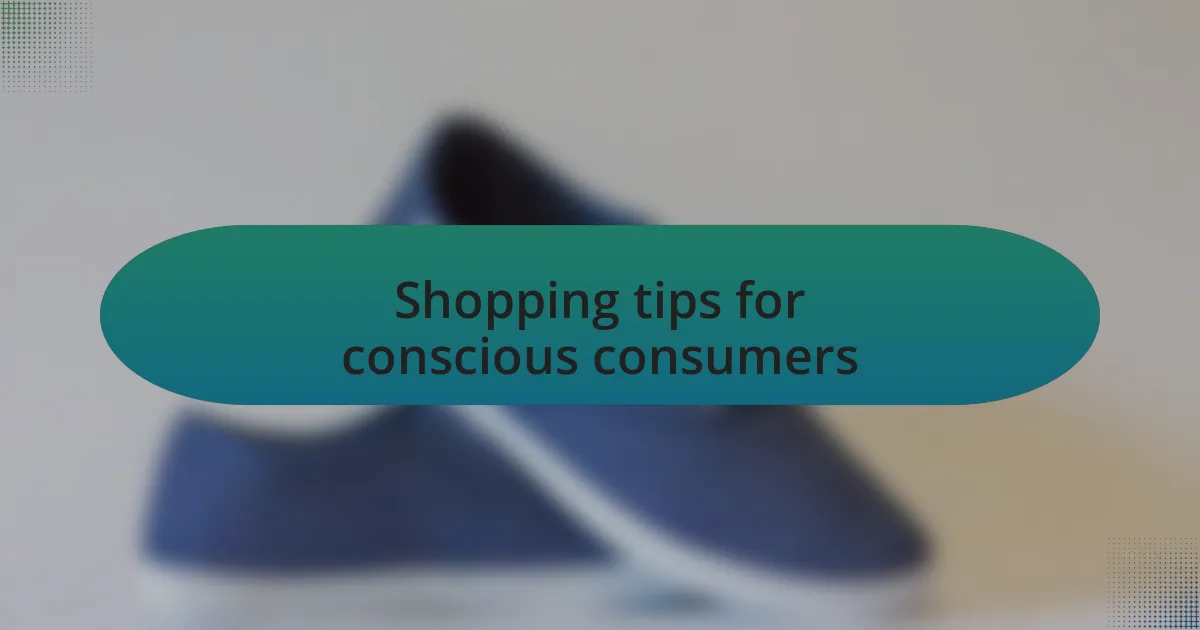
Shopping tips for conscious consumers
When I shop, I always make a list to stay focused and avoid impulse buys. This simple habit has saved me from countless regretful purchases. Have you ever brought something home only to realize it doesn’t match anything else in your closet? I certainly have, and it taught me the importance of intentional buying.
I also prioritize brands that value transparency and sustainability. A few months ago, I discovered a brand that openly shares their production processes and sourcing materials. Knowing that my clothing choices support ethical practices gives me a sense of fulfillment. It’s reassuring to think that I’m not just wearing clothes; I’m making a statement about the values I stand for.
Lastly, I keep an eye on the longevity of trends. Isn’t it tempting to chase after every new fashion wave? I’ve learned that investing in timeless pieces often pays off more than following fleeting styles. I remember purchasing a vintage-inspired dress that never goes out of style, and every time I wear it, I feel confident and chic. What could be better than having pieces in your wardrobe that are both beautiful and enduring?